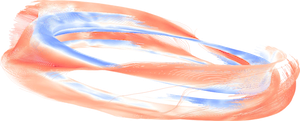François Hamel
Substitute : Charlotte Perrin
EDP analysis
Asymptotic analysis
Spectral analysis
Analysis of inverse problems
Analysis of controllability problems
Numerical analysis
Stochastic and numerical analysis of random/stochastic PDEs
Applications to biology and medicine
Mechanical applications
Applications to fluid mechanics
Applications to quantum mechanics
Applications to ITER problems
Groupe AA
The Applied Analysis group covers a very broad spectrum, from theoretical analysis of PDEs and numerical analysis to modeling in conjunction with other disciplines.

Thèmes de recherche
Fundamental research
- Linear elliptic PDEs, eigenvalue optimization, concentration of eigenfunctions, semi-linear elliptic PDEs, link with stationary Euler equations, 4th-order PDEs – Y. Dermenjian, F. Hamel, L. Le Treust, N. Nadirashvili, T. Ourmières-Bonafos, E. Parini, P. Sicbaldi. Dermenjian, F. Hamel, L. Le Treust, N. Nadirashvili, T. Ourmières-Bonafos, E. Parini, P. Sicbaldi.
- Theory of elliptic operators – E. Ernst, L. Le Treust, T. Ourmières, S. Monniaux.
Parabolic PDEs, reaction-diffusion, propagation phenomena, asymptotic dynamics – G. Chapuisat, H. Guo, F. Hamel. - Non-local equations, eigenvalue problems, rigidity theorems for nonlinear equations – J. Brasseur, F. Hamel.
- Analysis of Navier-Stokes equations in different flow regimes
- Well-positioned character, regularity of domain and edge conditions – S. Monniaux, C. Denis.
- Singular limits – C. Perrin.
- Multi-scale analysis
- Homogenization in fluid mechanics – P. Angot, J. Olivier.
- Applications to mixture models and flow in porous media – P. Angot, T. Gallouët, C. Perrin.
- Free boundary problems in fluid mechanics – C. Perrin
- Discrete Boltzmann equation in velocity – A. Nouri.
- Optimal transport, scalar conservation laws – M. Tournus.
- Asymptotic spectral analysis, semi-classical methods – T. Ourmières-Bonafos.
- Asymptotic analysis of growth-fragmentation equations – F. Hubert, A. Rat, M. Tournus.
- Long-time behavior of fluid mechanics problems – J. Olivier.
Spectral theory of elliptic differential operators: self-adjoint extensions of symmetric operators, spectral geometry and asymptotic spectral analysis – L. Le Treust, T. Ourmières-Bonafos.
Principal eigenvalues of integro-differential equations – F. Hamel.
Identification and reconstruction of coefficients in heat, Maxwell and hybrid equations from finance, medical imaging, etc. – L. Cardoulis, M. Cristofol, O. Poisson.
Inverse problems for growth-fragmentation equations – A. Rat, M. Tournus.
Exact and optimal control, observation, stabilization of parabolic or hyperbolic partial differential equations from a theoretical and numerical point of view and application to medicine – A. Benabdallah, G. Chapuisat, Y. Dermenjian, M. Mehrenberger, M. Morancey, L. Ouaili.
- Numerical analysis applied to confinement problems for Bose-Einstein condensates – L. Le Treust.
- Non-conformal methods for discretizing PDEs – P. Angot, A. Brunel, T. Gallouet, R. Herbin, F. Hubert, J.-C. Latche, Y. Nasseri.
- Domain decomposition, high order Schwarz methods for anisotropic elliptic problems – F. Hubert.
- Domain decomposition techniques, multigrid methods and adaptive meshes. Application to numerical simulation of nuclear fuel sintering – K. Saikouk.
- Numerical analysis of finite volume schemes for stochastic hyperbolic scalar conservation laws – J. Charrier, T. Gallouët.
-
Wave propagation in random media – C. Gomez
- Theoretical and numerical study of radiative transfer
- Random/stochastic Schrödinger equation
- Stochastic analysis of quantum decoherence
Applied research
- Inverse problems for parabolic PDEs modeling diffusion processes in biology, population evolution, gene diffusion… Biological invasions, adaptive dynamics, selection-mutation – M. Cristofol, F. Hamel.
- Modeling tumor growth and metastasis. Modeling the dynamic instabilities of microtubules and the therapies that target them. Modeling the impact of microtubules on cell migration. Modeling resistance to anti-cancer drugs – A. Benabdallah, G. Chapuisat, C. Gomez, F. Hubert, M. Tournus.
- Modeling cell migration in a confined environment – F. Hubert, J. Olivier.
- Modeling the impact of axogenesis in pancreatic cancer – F. Hubert, P. Pudlo (Groupe ALEA)
-
Modeling amyloid fibrils – M. Tournus.
-
Yeast modeling, cell cycle, aging, telomere – M. Tournus, A. Rat.
-
Dynamics of living systems (propulsion/friction, reorientation, diffusion), phase transition (use of kinetic equations) – M. Bostan.
-
Mixture models
- sedimentation – R. Herbin, J.-C. Latché, Y. Nasseri.
- interface problems: fluid-porous flows, multiphase flows, fluid-structure interactions – P. Angot, J.-M. Hérard, R. Herbin, T. Gallouët, J.C. Latché, C. Perrin.
- reactive media, application to nuclear safety – A. Brunel, J.-M. Hérard, R. Herbin, T. Gallouët, J.C. Latché.
-
Scale models – averaged
- Saint Venant equations, porous media equations, etc. – Y. Nasseri, J.-M. Hérard, R. Herbin, T. Gallouët, J.C. Latché, C. Perrin.
-
Modeling complex fluids
- Hébraud-Lequeux model, phase transition phenomena (vitrification) – J. Olivier.
- Macroscopic models for collective motion – C. Perrin.
- Stationary Euler equations – F. Hamel, N. Nadirashvili.
- Relativistic and non-relativistic physics (Schrödinger and Dirac equations) – L. Le Treust, T. Ourmières-Bonafos, E. Lavigne.
-
Quantum confinement (application to semiconductors, graphene and elementary particle theory), quantum chemistry – L. Le Treust, E. Lavigne, T. Ourmières-Bonafos.
-
A kinetic approach to the quantum theory of decoherence – M. Hauray, N. Kassis.
-
Quantum kinetic equations – A. Nouri.
- Homogenization, singular perturbations and application to composite material models – A. Sili
- Kriging and multiscale data reconstruction – J. Liandrat.
- Averaged models in charged particle transport with intense magnetic field, multiscale analysis – M. Bostan, M. Mehrenberger, A.T. Vu, S. Zhang.
- Vlasov-Poisson equations, gyrokinetic models, variational approach, fluid limits, numerical simulation (semi-Lagrangian methods, discontinuous Galerkin) – M. Bostan, M. Mehrenberger.
- Maxwell’s equations in strongly anisotropic media, strongly anisotropic diffusion – M. Bostan, F. Boyer, T. Blanc.





